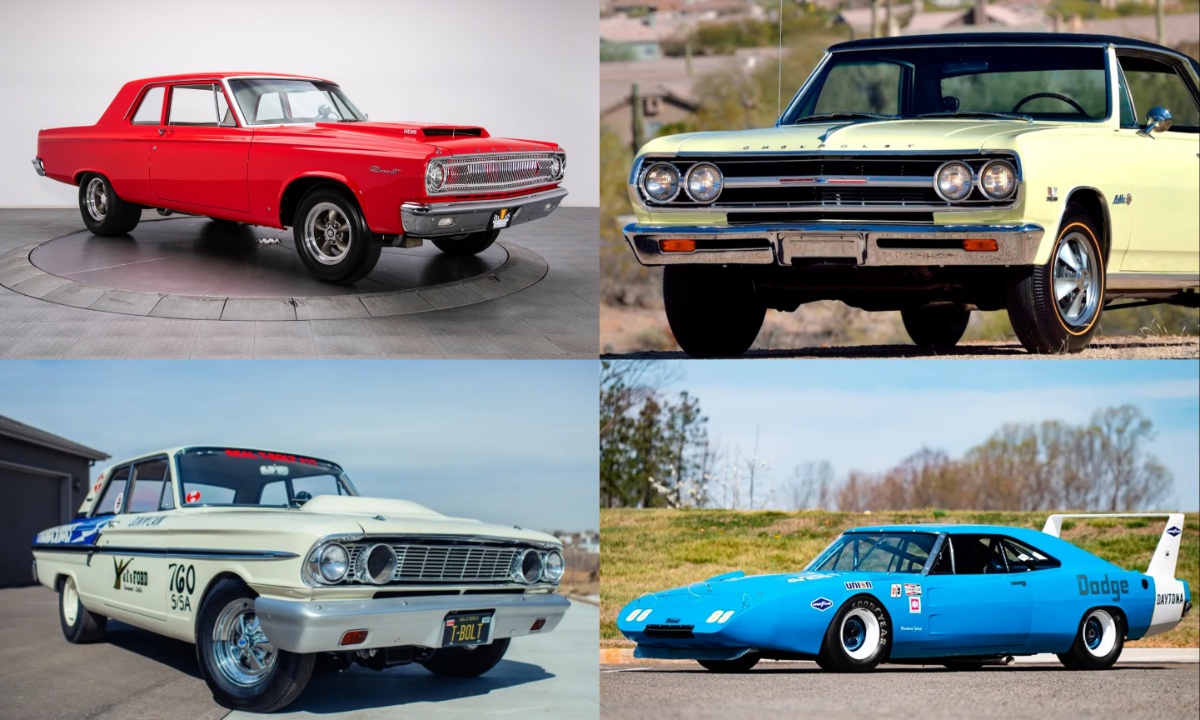The Pontiac GTO, introduced in 1964, is often considered the first muscle car, but it was more accurately the catalyst for the muscle car boom. While powerful V-8 cars had existed for years, the GTO was specifically designed for drivers who wanted speed and performance in a street-friendly package.
This marked a turning point for American automakers, who realized the potential market for fast, aggressive-looking cars and began producing more high-performance models tailored for everyday enthusiasts.
During the muscle car era of the 1960s and early 1970s, automakers focused on building cars that could dominate street races. These vehicles weren’t designed for practicality but for raw speed, allowing buyers to access near-professional drag racing performance straight from the dealership.
Competition among manufacturers led to the production of special edition models that met racing regulations for series like NASCAR and NHRA, making some of the most powerful drag cars available to the public.
For a car to qualify as a true factory drag vehicle, it had to come directly from the automaker without modifications from third-party tuners, be street legal, and be sold to the general public rather than just professional racers.
This excludes models like the Hurst Performance editions and certain COPO Camaros. Using verified data from sources such as MotorTrend and the NHRA, experts have identified the fastest factory drag cars that defined the golden age of muscle cars.
1. 1962 Dodge Dart Max Wedge 413
The 1962 Dodge Dart Max Wedge 413, often referred to by several names such as the 440, Ramcharger, or Four-Thirteen, was a high-performance muscle car that made a lasting impact despite being produced for only one model year.
Its top-tier trim, the 440, came equipped with a 413-cubic-inch Max Wedge V-8 engine, producing 420 horsepower and 470 lb-ft of torque.
Paired with a 727 Torqueflite automatic transmission, the Dart could accelerate from 0 to 60 mph in just 4.9 seconds and complete the quarter-mile in 13.4 seconds, reaching a top speed of 121 mph. With only 214 units produced, it remains a rare and sought-after piece of muscle car history.
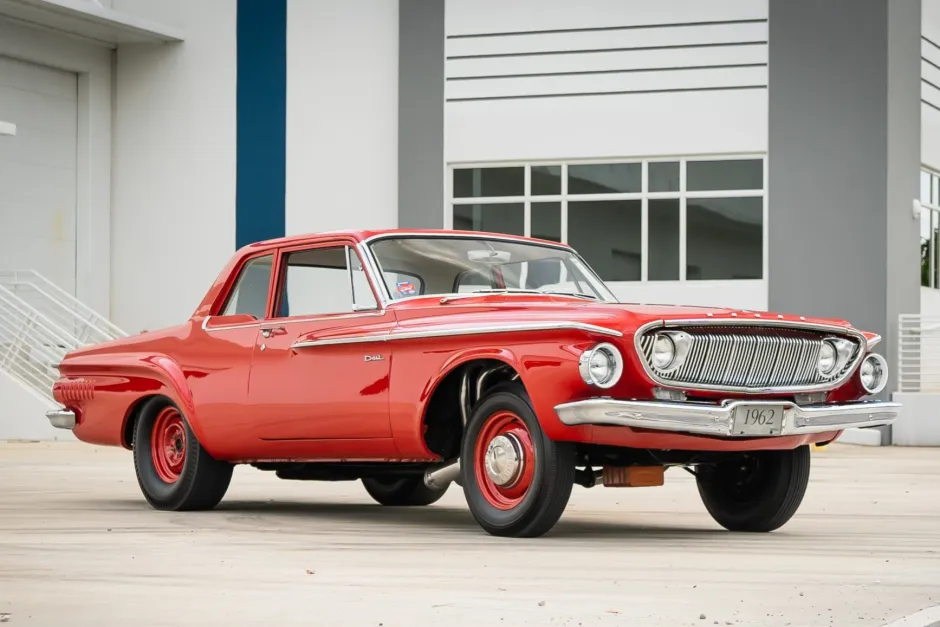
Though there may be some confusion about its various names, there was no uncertainty about its dominance on the drag strip. The Dart Max Wedge 413 was a powerhouse that consistently outperformed its competition.
Despite pop culture references, like The Beach Boys’ song Shut Down, which depicted an unlikely race where a Corvette 327 defeated the Dart, the reality was that this car was a true beast of its time. Its sheer power and limited production make it one of the most remarkable muscle cars from the early 1960s.
2. 1963 Chevrolet Impala Z11
The 1963 Chevrolet Impala Z11 was a factory-built drag racing legend, featuring a powerful 427-cubic-inch V-8 engine that produced 430 horsepower and 575 lb-ft of torque. Unlike its predecessor, which was celebrated in The Beach Boys’ song 409, the Z11 took performance to the next level with a lightweight design that included aluminum body panels.
Paired with a four-speed manual transmission, this Impala could sprint from 0 to 60 mph in just 4.3 seconds, complete the quarter-mile in 10.8 seconds, and reach a top speed of 124 mph. With only 57 units ever produced, the Z11 remains one of the rarest and most formidable muscle cars of its era.
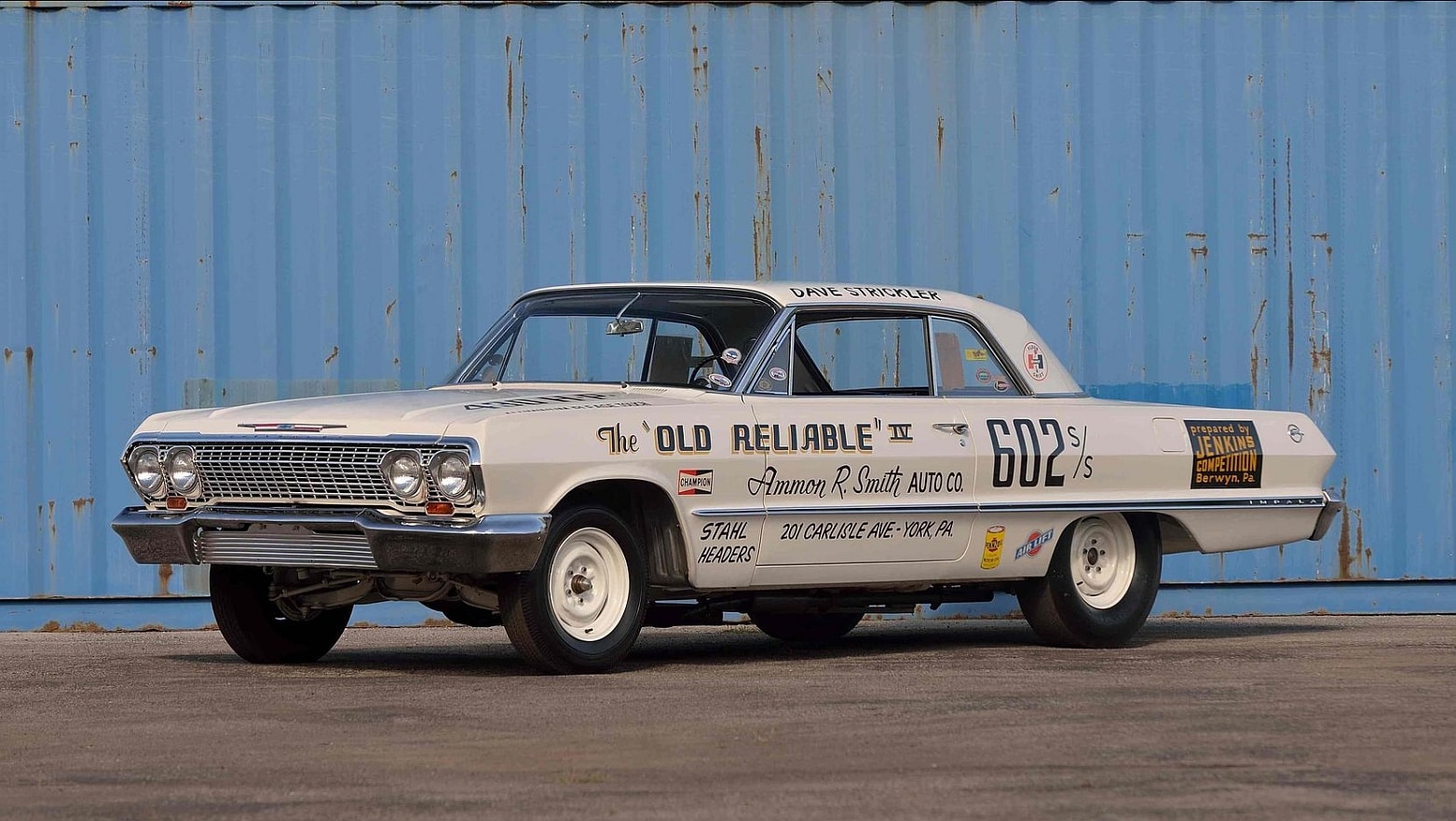
Designed strictly for quarter-mile dominance, Chevrolet stripped approximately 300 pounds of unnecessary weight from the Z11, including the front sway bar, bringing its total weight down to 3,500 pounds.
This drastic weight reduction helped the Impala achieve a groundbreaking milestone—it became the first stock car to surpass 120 mph in a quarter-mile run. Though built in limited numbers, the Z11 cemented its place in drag racing history as one of the fastest and most aggressive factory-built race cars of the 1960s.
3. 1971 Ford Mustang Mach 1 Drag Pack
The 1971 Ford Mustang Mach 1 Drag Pack was the first Mustang to break into the 13-second range in the quarter-mile, a milestone Ford had long pursued. While earlier high-performance Mustangs like the Shelby GT350 and Boss 429 were impressive, none had been able to dip below 14 seconds.
Powered by a 429-cubic-inch Super Cobra Jet V-8 producing 425 horsepower and 475 lb-ft of torque, the Mach 1 Drag Pack was equipped with a four-speed manual transmission and could accelerate from 0 to 60 mph in 5.1 seconds. With a quarter-mile time of 13.8 seconds and a top speed of 125 mph, it became one of the fastest factory-built Mustangs of its time.
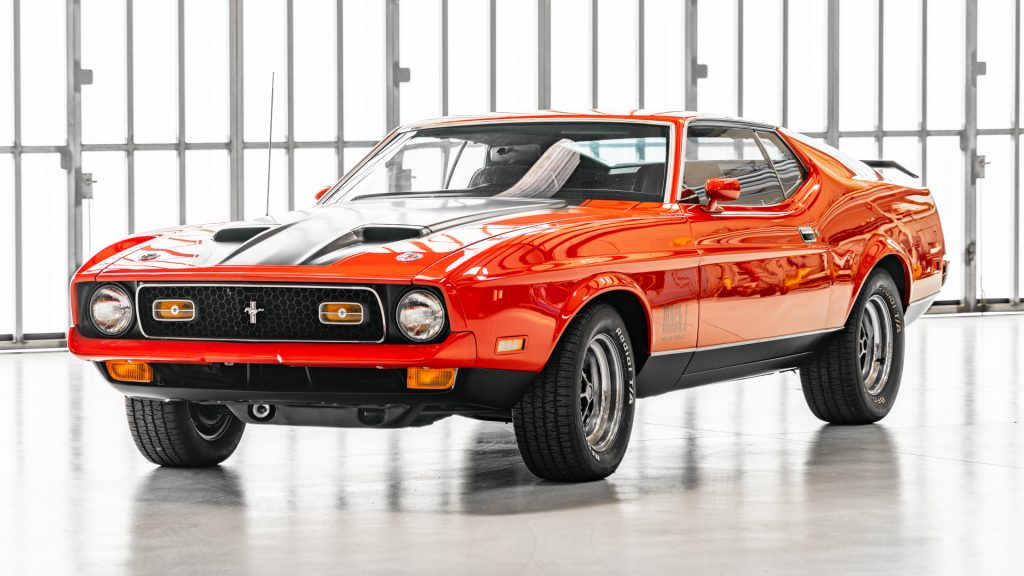
To achieve this breakthrough performance, Ford outfitted the Mach 1 Drag Pack with essential racing enhancements, including a Hurst shifter, disc brakes, power steering, and aggressive 4.30 rear gears.
These modifications allowed the Mustang to compete with muscle car heavyweights like the Chevelle SS and Plymouth Road Runner. With only 531 units produced, the Mach 1 Drag Pack remains a rare and significant model in Mustang history, proving that Ford could finally deliver a factory-built pony car capable of dominating the drag strip.
4. 1964 Ford Fairlane Thunderbolt
The 1964 Ford Fairlane Thunderbolt was a purpose-built drag racing machine, created by stuffing a massive 427-cubic-inch V-8 under the hood of a Fairlane. Ford even attached a metal disclaimer inside the car, warning buyers that it was designed for racing rather than comfort or refinement.
Producing 425 horsepower and 480 lb-ft of torque, the Thunderbolt featured a four-speed manual transmission and could rocket from 0 to 60 mph in just 4.7 seconds. With a blistering quarter-mile time of 11.6 seconds and a top speed of 130 mph, it quickly became one of the most dominant muscle cars on the drag strip.
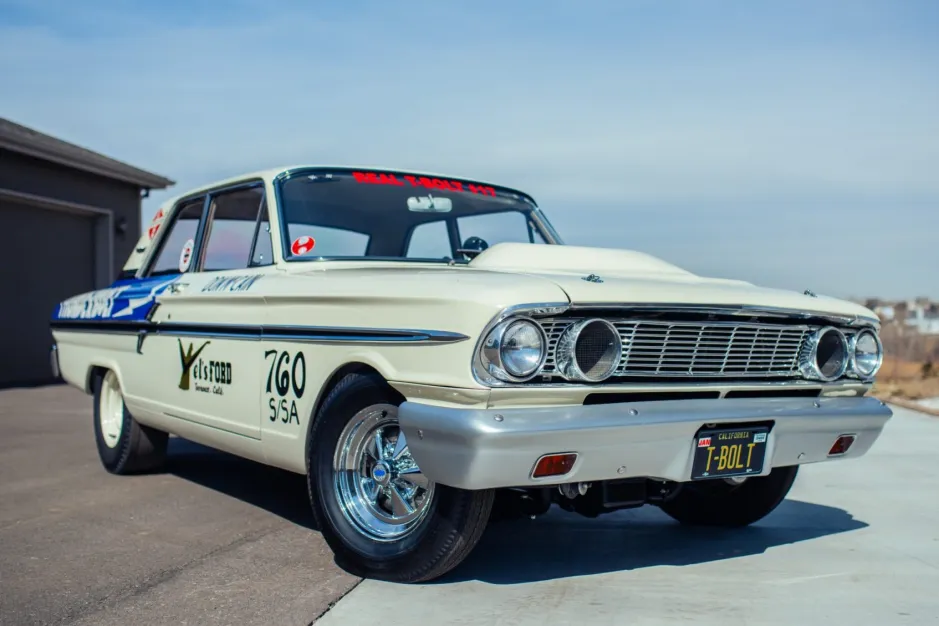
The Thunderbolt’s sheer power made it nearly unbeatable in competition, as proven at the 1964 NHRA Winternationals, where two of them faced off in the final round. Gaspar “Gas” Ronda won the race with an 11.78-second pass and ultimately secured the NHRA Top Stock championship.
With only 500 units produced, the Fairlane Thunderbolt remains one of the most legendary factory drag cars of its era, built solely to leave the competition in the dust.
5. 1969 Ford Torino Talladega
The 1969 Ford Torino Talladega was a NASCAR-inspired “aero car” built to dominate the track. To meet racing regulations, Ford produced 500 street-legal versions for the public, though their true purpose lay in professional competition rather than everyday driving.
Powered by a 428-cubic-inch Cobra Jet V-8 producing 335 horsepower and 440 lb-ft of torque, the Talladega could accelerate from 0 to 60 mph in 5.5 seconds and complete the quarter-mile in 14.4 seconds, reaching a top speed of 130 mph. Though designed for oval racing, many buyers repurposed them for drag racing, taking advantage of their powerful engines and aerodynamic design.
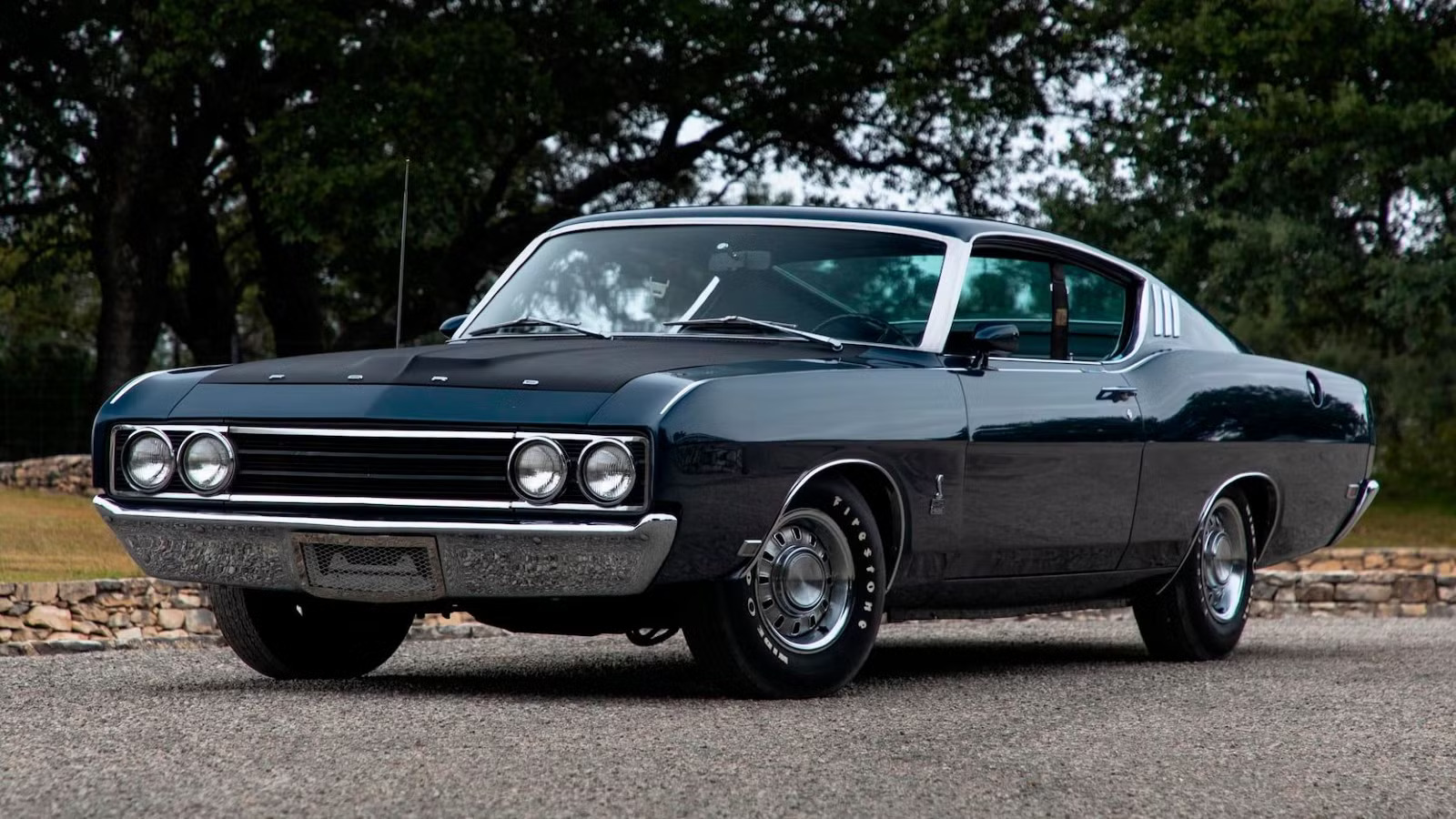
On the track, the Torino Talladega proved to be a dominant force, winning 29 NASCAR races across the 1969 and 1970 seasons—more than any other car. Its success even pushed Dodge to develop the Charger Daytona, adding a nose cone and massive wing to keep up with Ford’s advantage.
With its combination of speed, power, and race-proven performance, the Torino Talladega remains one of Ford’s most significant contributions to NASCAR history and a sought-after piece of muscle car lore.
Also Read: 10 Best European Sports Cars That Rival High Performance Supercars
6. 1964 Mercury Comet Cyclone GT
The 1964 Mercury Comet Cyclone GT was a rare and powerful factory drag car, serving as the Mercury counterpart to the Ford Fairlane Thunderbolt. While both cars shared the same monstrous 427-cubic-inch V-8 engine producing 425 horsepower and 480 lb-ft of torque, the Comet Cyclone was even rarer, with only 50 units produced compared to the Thunderbolt’s 500.
With a four-speed manual transmission, it could launch from 0 to 60 mph in just 4.2 seconds, complete the quarter-mile in 12.0 seconds, and reach a top speed of 133 mph. Built for competition, it was designed to dominate its racing class.
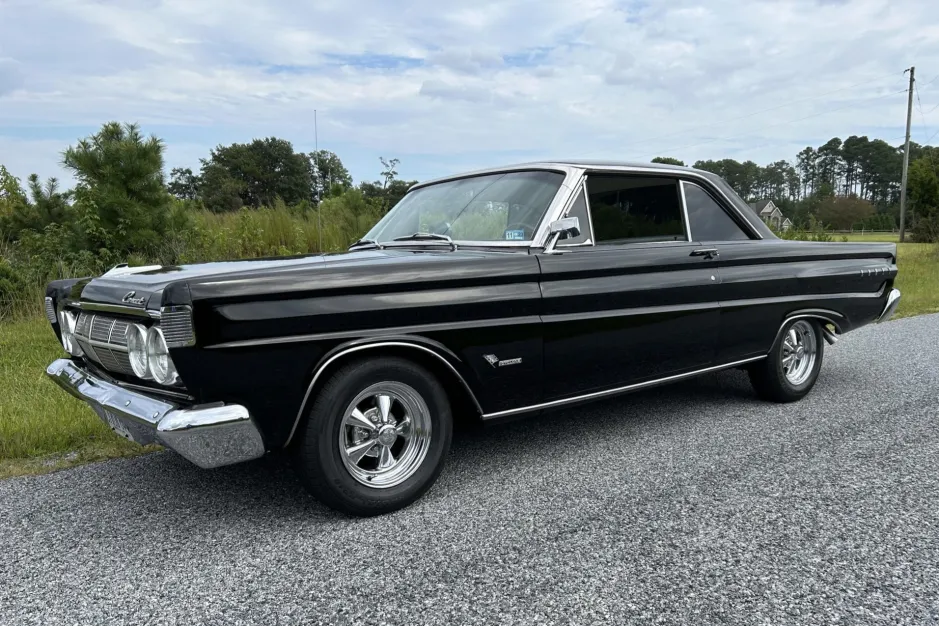
Unlike the Thunderbolt, which competed in the NHRA’s Super Stock division, the Comet Cyclone raced in the A/FX (Factory Experimental) class, where it was a formidable contender. Just as Ford’s Thunderbolt was nearly unbeatable on the track, Mercury’s Comet Cyclone proved to be a powerhouse as well.
While most were used professionally, a few lucky amateurs managed to acquire one, making it one of the most extreme street racers of its era. Its limited production and high-performance capabilities cement its place as one of the most coveted drag cars of the 1960s.
7. 1973 Pontiac Firebird Trans Am 455 Super Duty
The 1973 Pontiac Firebird Trans Am 455 Super Duty was a response to General Motors’ long-standing ban on engines over 400 cubic inches in mid-size cars and its 1963 prohibition on factory-backed racing development. Due to these restrictions, Firebirds had historically lagged behind Fords and Mopars in raw performance.
However, once GM lifted the engine ban in 1970, Pontiac took advantage of the change by developing a high-output 455-cubic-inch LS2 V-8 for the Firebird Trans Am Super Duty. Producing 310 horsepower and 395 lb-ft of torque, this powerhouse allowed the car to reach 0 to 60 mph in 5.6 seconds, complete the quarter-mile in 13.5 seconds, and achieve an impressive top speed of 155 mph.
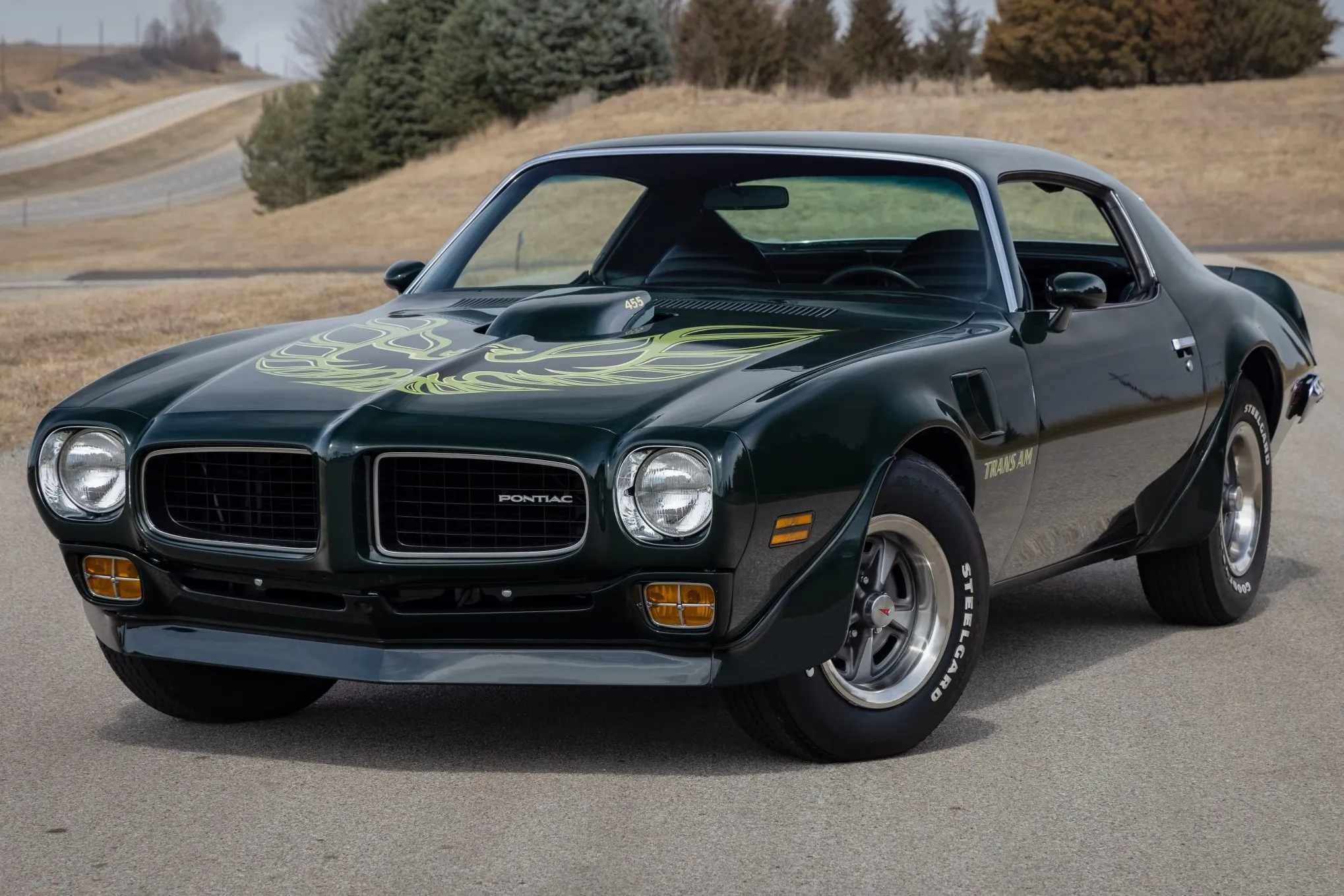
Although GM was late to the high-performance game, Pontiac made up for lost time with the 455 Super Duty, which became one of the last truly fast American muscle cars before the performance decline of the mid-to-late 1970s.
With only 252 units produced, this Firebird remains an iconic collector’s car, representing Pontiac’s determination to push boundaries even as emissions regulations and fuel crises loomed. Despite arriving at the tail end of the muscle car era, the 1973 Firebird Trans Am 455 Super Duty left a lasting legacy as one of the fastest and most powerful American cars of its time.
8. 1965 Dodge Coronet A990
The 1965 Dodge Coronet A990 was Dodge’s creative way of pushing the limits of NHRA’s Super Stock class rules. While regulations prohibited the use of lightweight materials and restricted engine placement, Dodge found a workaround by shortening the wheelbase to 115 inches, effectively positioning the engine closer to the vehicle’s center for better weight distribution.
Under the hood, it packed a race-tuned 426 Hemi V-8 producing 500 horsepower and 490 lb-ft of torque. This raw power allowed the Coronet A990 to achieve an estimated 0-60 mph time of 4.3 seconds, complete the quarter-mile in 11.8 seconds, and reach an astonishing top speed of 160 mph. With only 101 units produced, it became a rare and formidable drag racing machine.
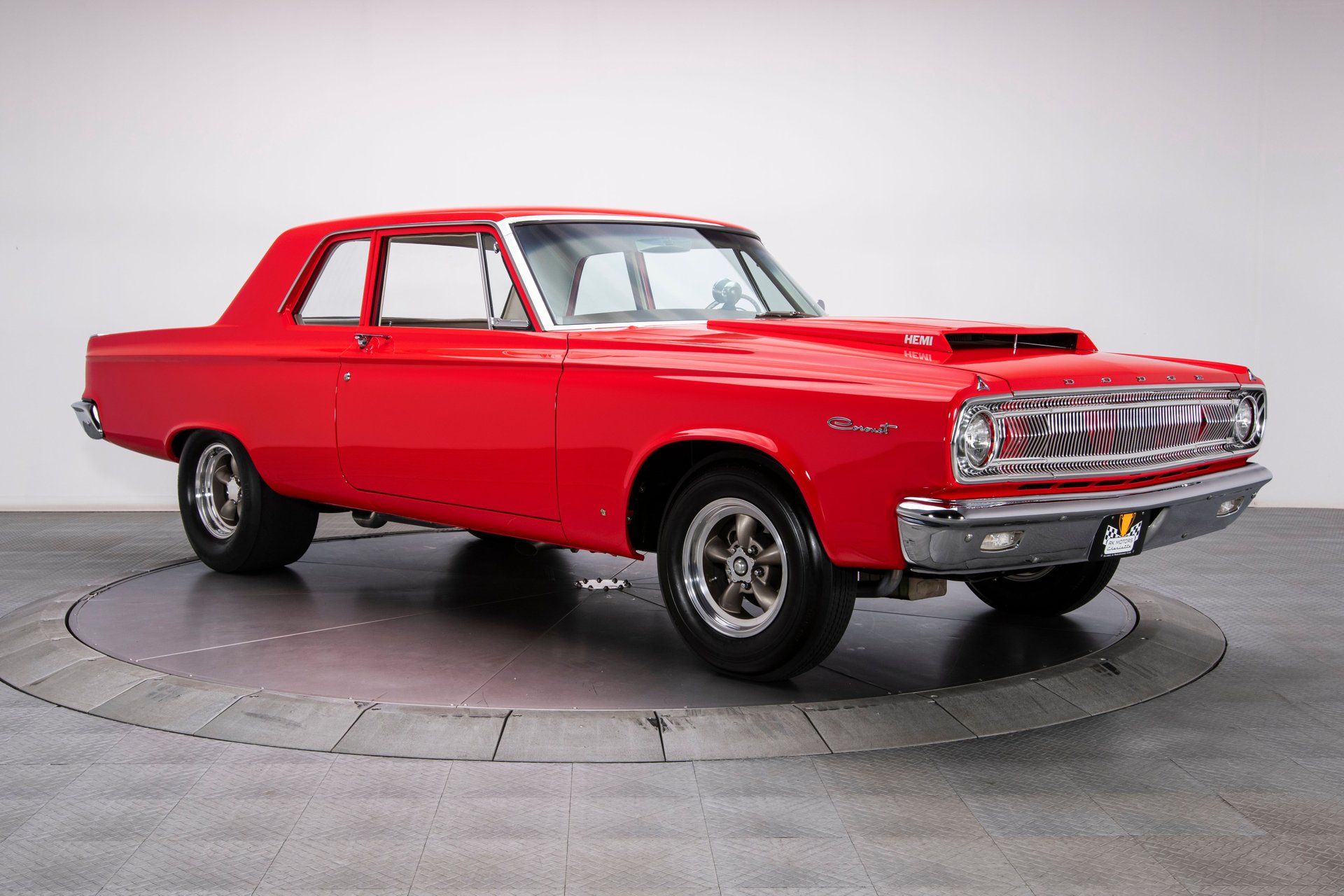
To further reduce weight without violating NHRA rules, Dodge used an innovative process called “chemical milling” to thin out the steel in the bumpers, hoods, doors, and fenders by over 60 percent. The car was also stripped of unnecessary components like the radio and decorative trim, bringing the total weight down to just 3,408 pounds.
The result was a lightweight, high-powered B-body that dominated the drag strip, proving Dodge’s ingenuity in bending the rules while staying within legal limits. The Coronet A990 remains one of the most legendary factory-built drag racers of its era, showcasing the extreme lengths manufacturers would go to in order to gain a competitive edge.
9. 1965 Chevrolet Chevelle Z16 SS
The 1965 Chevrolet Chevelle Z16 SS was one of the most aggressive and exclusive muscle cars ever to wear the Chevelle nameplate. While many consider the 1970 Chevelle SS the ultimate model, the Z16 SS was a raw, high-performance machine built to generate excitement around Chevrolet’s new 396-cubic-inch Turbo Jet V-8.
Despite its misleading name, the engine wasn’t turbocharged, but it still delivered an impressive 375 horsepower and 420 lb-ft of torque. Limited to just 201 units, the Z16 SS could accelerate from 0 to 60 mph in an estimated 5.5 seconds, run the quarter-mile in 14.1 seconds, and reach a top speed of 160 mph.
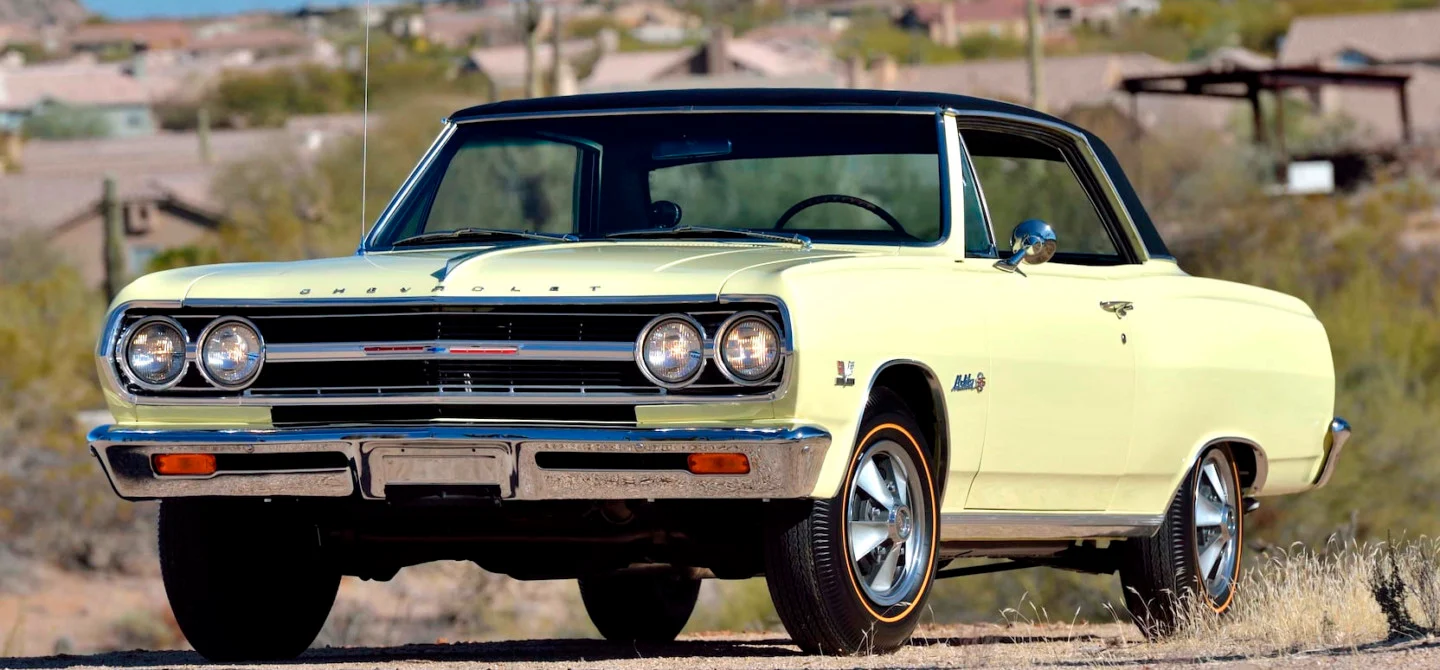
Chevrolet developed the Z16 SS while working within GM’s strict racing and engine bans, making its success even more impressive. Despite these corporate restrictions, the Z16 held its own against muscle cars from other automakers that didn’t face such limitations.
With near-13-second quarter-mile potential and incredible high-speed capability, it was a true street racer. Though it remained a rare and underappreciated model compared to later Chevelles, the Z16 SS proved that Chevy could build a serious contender even under corporate constraints, solidifying its place as a legendary muscle car.
10. 1969 Dodge Charger Daytona
The 1969 Dodge Charger Daytona was built as an aerodynamic powerhouse designed to dominate NASCAR, much like Ford’s Torino Talladega. To meet homologation requirements, Dodge needed to sell at least 500 units to the public, though actual production numbers remain debated, with estimates closer to 120.
Regardless, these “Winged Warriors” quickly became some of the fastest factory drag cars available to private buyers. Powered by a 426 Hemi V-8 producing 425 horsepower and 490 lb-ft of torque, the Daytona could rocket from 0 to 60 mph in 5.3 seconds, complete the quarter-mile in 13.7 seconds, and hit a staggering top speed of 170 mph.
While primarily designed for NASCAR, the Charger Daytona proved itself as a formidable drag racer in private hands. One of the most legendary street racers, Big Willie Robinson, dominated the Los Angeles racing scene with a ’69 Daytona, solidifying its reputation as more than just a track car.
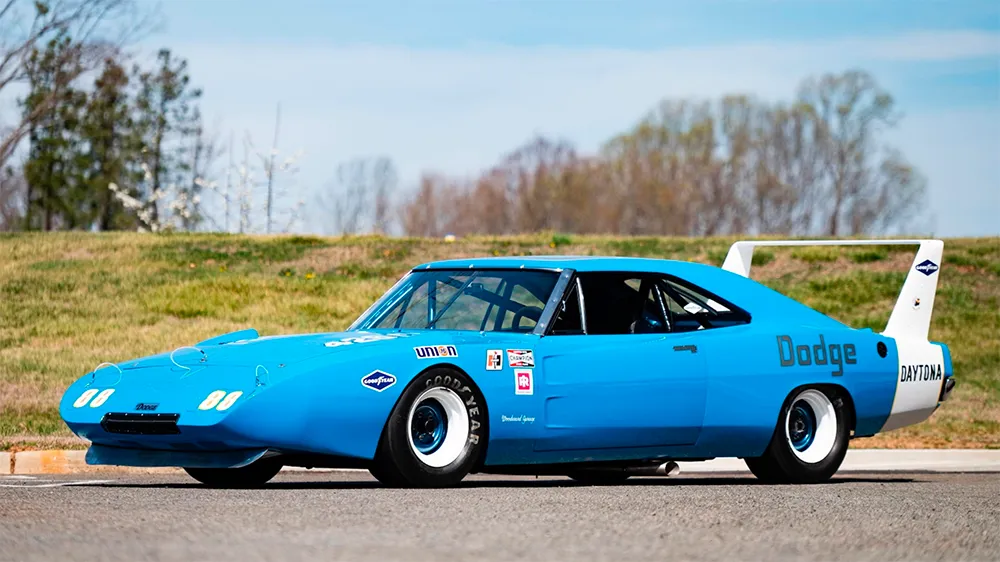
In recognition of his contributions to street racing culture, Dodge even released a special King Daytona Last Call edition decades later. With its unmatched speed and historical significance, the 1969 Charger Daytona remains the fastest factory drag car of the classic muscle car era.
The golden age of muscle cars produced some of the most powerful and legendary drag racers ever built, combining raw horsepower with innovative engineering to dominate both the streets and the track.
From the lightweight and purpose-built Dodge Coronet A990 to the NASCAR-inspired Charger Daytona, these factory drag cars pushed the limits of performance and redefined what was possible straight from the dealership.
Each of these machines represented the height of muscle car ingenuity, showcasing how automakers found creative ways to navigate racing regulations while delivering extreme speed to enthusiasts. As the muscle car era faded due to stricter emissions laws and fuel crises, these high-performance legends remain highly sought after, preserving their legacy as icons of American automotive history.
Also Read: 10 Best One-Off Cars That Pushed the Limits of Design, Engineering, and Automotive Innovation

